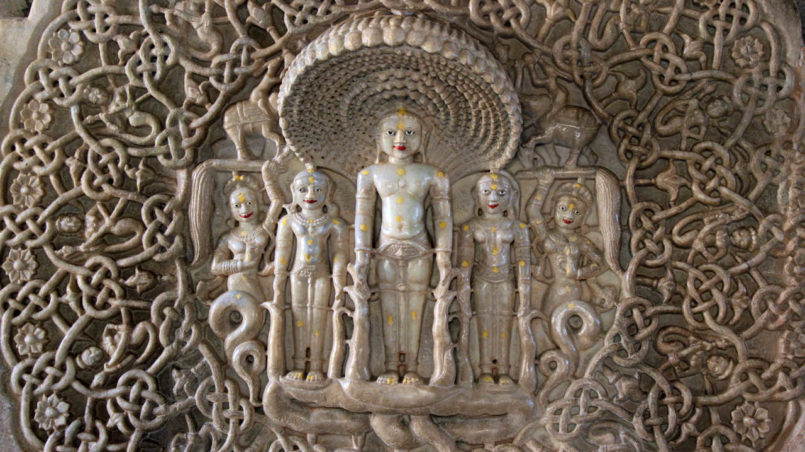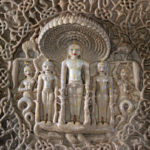The Varna System

The caste system is an undeniable reality of the Indian social structure. The horrendous impact of the caste system on Indian social fabric and on the lives of many Indians for a long time cannot be refuted. The influence of the caste system in India is overarching as the practices and belief system that emanate from such a system has penetrated each and every aspect of Indian life. The caste system has impacted and heavily influences not only India’s social structure and belief system, but also the political and economic landscape in India since time immemorial.
This caste system is a contemporary manifestation of the ancient Varna system. The word Varna is a Sanskrit term which means count, classify, describe, or choose. The earliest mention of the Varna system was found in the “Purusa Sukta” verse of the Rig Veda. The Rig Veda is one of the four Vedas. The other Vedas are the Yajurveda, the Samaveda and the Atharvaveda. The Vedas are ancient scriptures or one can also say body of knowledge and were written in Vedic Sanskrit. According to Hinduism, the Vedas were created by the sages of ancient India after certain divine revelations.
In fact, the Varna system is intensively discussed in many other ancient texts that developed in the Indian subcontinent like the Manusmriti, Dharma-Shastras, Buddhist texts and texts of Jainism like the Adi-Puranas.
According to the ancient texts, society was classified into four Varnas i.e. Brahmins, Kshatriyas, Vaishyas and Shudras. In contemporary India, many types of discrimination emanate from the Varna system and an understanding is rampant that these four Varnas are hierarchical in nature. Also our present social structure is heavily influenced by a Varna system which is considered inherently linked to birth. The Varna system is also interpreted in terms of purity-impurity.
However, this understanding does not spring from the Vedas and many other ancient texts. I would like to present the alternative understanding of the Varna system that comes from the ancient texts.
The prevalent misconception that Shudras are lowly and represent impurity comes from the misinterpretation of this explanation that Shudras represent the feet of the Virat Purush. Even now in certain remote villages the Shudras are not allowed to enter the house of Brahmins as the former are deemed unclean. Even though such practices are still prevalent in certain places in India, such phenomenon is not ubiquitous all over contemporary India.
Another meaning of Varna is color. In ancient Indian scriptures, the three mental states or psychic constitution are also described by Varna or color. The three gunas i.e “Tri-guna” are: “Sattva”, “Rajas” and “Tamas”. “Sattva” is described through the color white. “Rajas” is described through the color red whereas “Tamas” is described through the color black.
In ancient India, society was organized in such a way that different sections of society took up different occupations for the smooth functioning and welfare of society. And the Varna system was a manifestation of such an organization. In fact, according to many scholars of ancient texts, the Varna system was a social ideal rather than a social reality. Varna was to be ascribed based on a person’s karma, i.e. action.
People of “Sattvik guna” are those whose natural disposition is to engage in introspection or self-realization; to work towards control of their senses and to work to keep themselves pure from both outside and inside, i.e. purity of their mind. Such people are usually interested in and study the ancient scriptures, like Vedas and Upanishads to understand the “Brahman” and seek the spiritual path.
Those who chose to protect their people and were fearless enough never to run away from battlefield and were altruistic in nature were to be categorized as Kshatriyas. Kings and chiefs were considered the Kshatriyas as they took up the responsibility of administering and protecting the people of their kingdom.
Such people were involved in production and trade for fulfilling the material needs of society. People who were “Tamas guna pradhan” were inclined towards serving their society and, therefore, took up such responsibilities. Such people were to be considered Shudras.
In the ancient Varna system, no-one was deemed superior or inferior. For the welfare and smooth functioning of society, it was understood that it is necessary that every person work in synergy according to his or her capabilities and inclinations.
Credits
| Image | Title | Author | License |
|---|---|---|---|
 |
Karma | Nagarjun Kandukuru | CC BY 2.0 |

The above explanation is not convincing. It is no use defending the indefensible. Classification of society into four varnas and gunas is baseless and uncharitable. The God who revealed this scheme cannot be a true God. It is reasonable to believe that the varna system was the handiwork of a section of powerful people in ancient India to perpetuate their status and power.